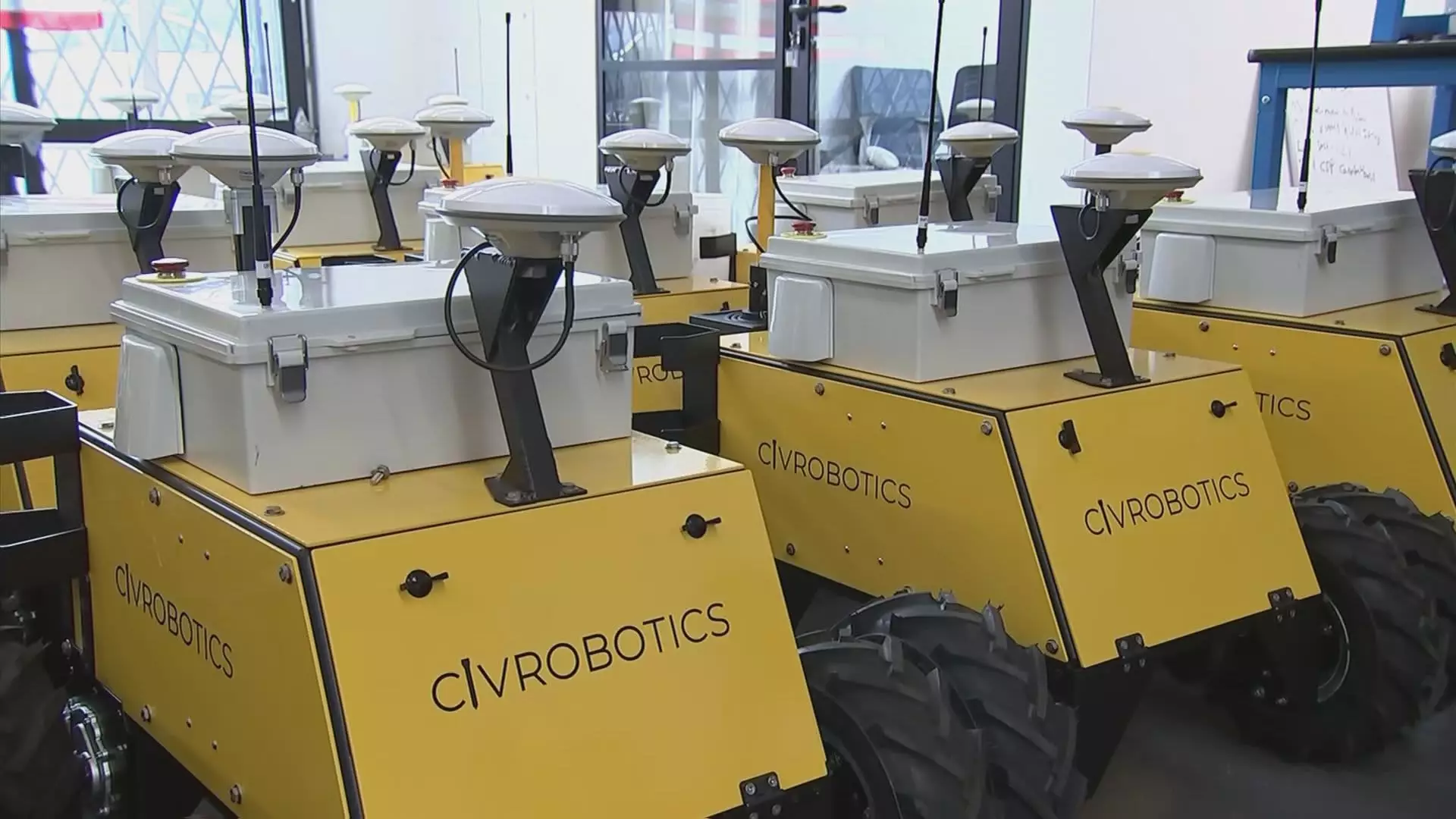Despite recent governmental funding setbacks, the rapid advancement of technology continues to propel private renewable energy projects forward with remarkable momentum. Solar farm construction, a vital component of the renewable sector, has historically been labor-intensive, requiring meticulous planning, extensive surveying, and long hours by skilled workers. However, innovative robotics are beginning to transform these processes, offering unprecedented efficiency and accuracy. This technological shift challenges conventional notions of manual labor and showcases the profound potential of automation to reshape energy infrastructure development.
Robotics: Efficiency and Precision on Uneven Terrains
At the forefront of this transformation is CivDot, a four-wheeled robot developed by Civ Robotics. Unlike traditional survey teams, CivDot can autonomously mark up to 3,000 layout points daily with an accuracy within eight millimeters. Its ability to navigate rugged, uneven terrain and operate through adverse weather conditions underscores the evolving capacity of robotics to handle complex outdoor environments often considered challenging for human workers. The core strength of CivDot lies in its advanced navigation and geospatial technologies, which enable it to perform with remarkable precision, even in deserts, rocky fields, and muddy landscapes.
This leap in technology exemplifies how automation is reducing the dependency on manual labor, which is both costly and time-consuming. The process is streamlined; field data, previously gathered through traditional survey equipment requiring multiple personnel and intricate setup, is now uploaded into CivRobotics’ software. Operators simply select the target area, and CivDot handles the heavy lifting — marking coordinates swiftly and accurately. The efficiency gained translates into significant cost savings, not only in labor but also in project timelines, accelerating the pace at which renewable projects can be developed.
Impact on the Workforce and Industry Standards
The introduction of CivDot signifies a fundamental shift in industry standards. Previously, highly trained survey engineers spent hours or even days in the field, meticulously marking locations for solar panel foundations or other infrastructure, often working under tough conditions. Today, companies like Bechtel are witnessing dramatic productivity improvements. For example, where a human team might mark 250 to 350 points per day, CivDot can accomplish approximately 1,250, effectively quadrupling output.
This heightened productivity comes with nuanced considerations. Terrain specifics—such as thick mud, dense brush, or rocky landscapes—demand careful planning around equipment design, from tire robustness to clearance. Moreover, batteries require regular swapping to sustain operations during long work shifts, prompting logistical adjustments but still far outperforming manual efforts.
Critically, these technological innovations also introduce a paradigm shift in workforce dynamics. While some might fear automation replacing jobs, the reality is more nuanced: automation shifts labor toward supervisory, maintenance, and technological oversight roles, fostering new opportunities. The industry must adapt, emphasizing skill development in robotics operation and data management to maximize these tools’ benefits.
The Broader Future and Industry Implications
With over 100 CivDot units already deployed primarily within the renewable sector, the implications extend beyond mere efficiency. The competition among robotics providers typically centers around work on highways or sports fields—areas with predictable, flat terrain. Civ Robotics stands apart, leveraging its specialized technology to conquer the unpredictable and challenging terrains characteristic of large-scale solar farms, especially those expanding into remote regions.
Investment backing from notable venture capitalists and manufacturing partners, including Alleycorp, FF Venture Capital, and Bobcat Company, underscores the confidence in this technology’s disruptive potential. As these robots become more sophisticated and widespread, they may well catalyze a collaborative relationship between humans and machines, optimizing project timelines, reducing costs, and improving overall project quality.
The shift also signals a broader industry trend: innovation driven by necessity and opportunity in a landscape that demands greener, faster, and more cost-effective solutions. In the face of fluctuating policy support, private sector ingenuity and technological prowess are proving essential in ensuring renewable energy infrastructure continues to expand and mature. The era of robotic construction in renewable energy is not just emerging; it is poised to redefine what’s possible in sustainable development.

